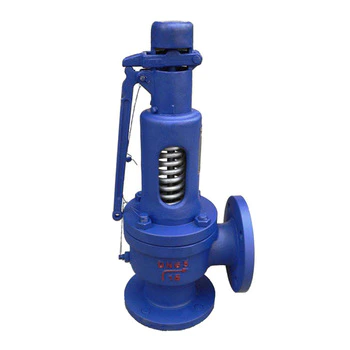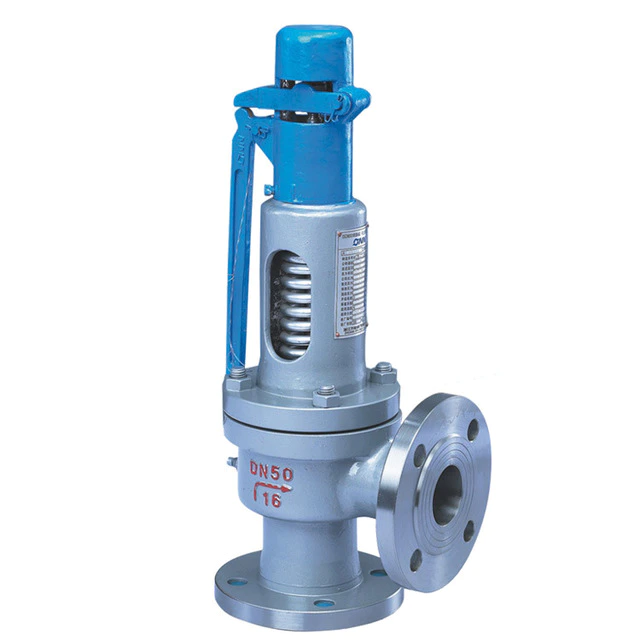COVNA Products


COVNA Cast Iron Pressure Steam Boiler Safety Valve
Safety valves are automatic valves that play a critical role in boilers, pressure vessels, and pipelines. When pressure reaches a preset limit, they automatically open to relieve pressure, preventing it from exceeding safe levels. This protects people and equipment from the dangers of overpressure. Always remember that safety valves must be pressure-tested before being put into service to ensure they will function properly when needed.
- Model: Boiler Safety Valve
- Size Range: 3'' to 4"
- Pressure Range: 0.18 to 1.6MPa
- Material: WCB, CF8M
Key Features
Fast Response: Sensitive reseating and rapid relief minimize overpressure risks.
Durable Materials: The valve body is constructed of WCB cast steel, and the trim is ZG2Cr13 stainless steel alloy, treated for high-temperature and corrosion resistance, for a long service life.
Compatible: Accepts steam, gas, and liquid media, meeting high-temperature (≤450°C) and high-pressure (≤1.6 MPa) operating conditions.
Multiple Standard Options: Conforms to GB, DIN, ANSI, and other international standards. The high-pressure version utilizes JIS B 8210 20K RF flange connections (for operating pressures >1.0 MPa).
Technical Parameters
| Parameter | Technical Indicator | Unit |
|---|---|---|
| Nominal Diameter | 3" – 4" | in |
| Working Pressure | 0.18 – 1.6 | MPa |
| Applicable Temperature | –29 – 450 | °C |
| Valve Body Material | WCB (Cast Steel) | |
| Valve Internal Parts Material | ZG2Cr13 (valve seat, guide sleeve, etc.) | |
| Spring Material | 50CrVα | |
| Standard and Connection Method | GB / DIN / ANSI; flange |
Structural Materials
Valve Body: WCB Cast Steel
Valve Seat, Guide Sleeve, Disc: ZG2Cr13 Alloy
Spring: 50CrVα Alloy Steel
Valve Cover, Adjusting Ring: ZG230-450
Adjusting Screw, Wrench, Protective Cover: 45# Carbon Steel / ZG200-400
Applications
Boiler Systems: Gas, Oil, and Biomass Boilers
Pressure Vessels: Gas Storage Tanks, Steam Tanks, and Pressure Vessels
Industrial Pipelines: Process Pipelines in the Petrochemical, Chemical, Pharmaceutical, and Paper Industries
Other High-Pressure Gas and Liquid Media Protection Devices
Get a Quote Now
Click the button below or call our hotline to get a personalized quote and technical support.
The actuator on my automated valve operates, but the valve won’t turn. Why?
Most likely the valve stem or actuator coupling is broken.
Why doesn’t my valve open or close completely when the actuator operates it?
The electric actuator limit switches or the pneumatic actuator position stops are not correctly adjusted.
When I energize the solenoid on my pneumatic actuated valve, the valve won’t turn. How come?
Probably because there is no air pressure to the solenoid or dirt has jammed it. Also, debris might be trapped inside the valve. Or, the air pressure is not sufficient to operate the actuator. Remember: measure air pressure at the actuator, not at the compressor.
Can I buy an actuator from one manufacturer and mount it to a valve from another manufacturer?
Maybe. First, be sure that the actuator torque output is sufficient to turn the valve reliably. Second, you will have to fabricate a custom mounting bracket and coupling to connect the actuator to the valve.
What happens if I lose power to my electric actuator in the middle of an actuation cycle?
The valve will stop somewhere between full open and close. When power is reapplied to the original circuit, the actuator will complete the cycle.
I ordered a fail open pneumatic actuated valve by mistake. I needed a fail closed one. What can I do?
To make the change just remove the actuator from the valve and turn it, or the valve stem, 90 degrees and remount the actuator.
I’ve installed my automated valve in the line, but now I don’t know if the valve is in the open or closed position. How can I find out?
Remove the actuator from the valve and check the valve stem. Most ball valves have stem flats at right angles to the flow when the valve is in the off position. On butterfly valves check the stem flow arrow marking.
Do I have to have the solenoid valve that controls the air supply to my pneumatic actuator mounted right on the actuator?
Remove the actuator from the valve and check the valve stem. Most ball valves have stem flats at right angles to the flow when the valve is in the off position. On butterfly valves check the stem flow arrow marking.
How do I wire up my electric actuator?
Check the electric wiring schematic that came with the actuator for the correct hookup. Sometimes a copy is inside the actuator cover. If it is missing, don’t guess about the connections. Call the manufacturer for a schematic.
I’ve just installed an electric actuated valve and when I power it, it turns the valve 360 degrees and won’t shut off. What’s wrong?
The actuator is wired incorrectly (check the schematic accompanying the actuator), or the external control switch is not the correct type for the actuator.
My electric actuators cycle time is way too fast, can I slow it down?
Not unless you bought it with an optional speed control.
I just replaced a solenoid valve with an electric actuated valve and it won’t work. Why?
Actuators and solenoid valves require different types of electrical control switches. SPDT for actuators, SPST for solenoids. Check the actuator wiring schematic for the correct wiring and switch type.












